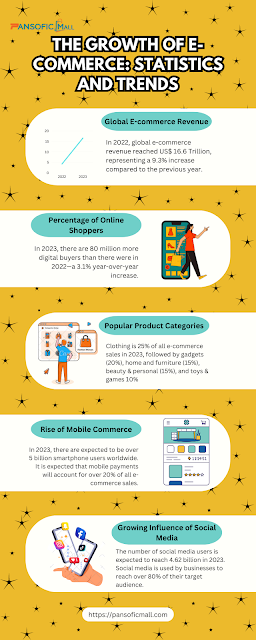Title: How Small Businesses Can Build Powerful Online Stores
Title: How Small Businesses Can Build Powerful Online Stores
Meta Description: Discover how small businesses can build powerful online stores using affordable tools, strategic planning, and best practices. Learn from real-world examples and actionable steps.
Introduction
In today's digital-first world, having a powerful online store is no longer a luxury for small businesses—it's a necessity. With global eCommerce sales expected to reach $7.4 trillion by 2025, small businesses that embrace online selling have a better chance of growth, customer retention, and sustainability. This blog dives deep into how small businesses can build and scale powerful online stores, with real-world examples, best tools, and actionable steps.
1. Identify Your Niche and Target Audience
Before jumping into design and development, small business owners must clearly define their niche and target audience. Understanding what you sell, who you sell to, and why your product matters creates a strong foundation for your online store.
Example: "Meowingtons," a niche online store for cat-themed merchandise, caters specifically to cat lovers, which helps them tailor content, promotions, and product designs that resonate deeply with their audience.
Action Steps:
Create buyer personas.
Research market trends and competitors.
Use Google Trends and social media listening tools.
2. Choose the Right eCommerce Platform
The platform you choose determines the flexibility, scalability, and functionality of your store. For small businesses, ease of use and cost-effectiveness are key.
Top Platforms:
Shopify: All-in-one solution, beginner-friendly, excellent for dropshipping and inventory management.
WooCommerce (WordPress): Highly customizable, SEO-friendly, best for those with WordPress experience.
BigCommerce: Scalable and feature-rich, ideal for growing brands.
Wix eCommerce: Great for visually driven businesses like fashion or home decor.
Example: "Beardbrand," a grooming products brand, started with a simple Shopify store and scaled into a multi-million-dollar business.
Action Steps:
List must-have features (e.g., payment gateways, shipping integrations).
Test platform demos.
Compare pricing plans.
3. Focus on User-Friendly Website Design
Design and user experience play a huge role in converting visitors into customers. A clutter-free, mobile-responsive, and fast-loading website keeps users engaged.
Best Practices:
Use high-quality images and videos.
Optimize navigation and product filters.
Implement a clean, brand-aligned color scheme.
Example: "Allbirds" uses minimalist design, natural color palettes, and storytelling elements to enhance user experience.
Action Steps:
Choose a mobile-responsive theme.
Optimize loading speed with tools like Google PageSpeed Insights.
Conduct A/B testing for homepage and product page designs.
4. Craft Compelling Product Descriptions and Visuals
Your online store is your digital showroom. Persuasive product descriptions and high-resolution visuals help customers make informed decisions.
Best Practices:
Highlight benefits over features.
Use bullet points for readability.
Include user-generated photos and video reviews.
Example: "Glossier" focuses on storytelling in its product descriptions and includes user-submitted photos for authenticity.
Action Steps:
Hire a copywriter or use AI tools for description writing.
Invest in professional product photography.
Encourage customers to leave reviews with photos.
5. Integrate Secure and Flexible Payment Gateways
Trust is essential when handling transactions online. Offering multiple secure payment options reduces cart abandonment.
Popular Options:
PayPal
Stripe
Square
Razorpay (for Indian businesses)
Example: "The Sill," a plant delivery company, uses Stripe and Apple Pay to simplify checkout.
Action Steps:
Ensure SSL certificate installation.
Display trust badges.
Offer multiple payment methods, including digital wallets.
6. Streamline Shipping and Logistics
Efficient shipping and logistics are vital to customer satisfaction. Delayed or mishandled deliveries can hurt your brand reputation.
Best Practices:
Offer real-time shipping rates.
Provide tracking and estimated delivery dates.
Partner with reliable carriers (e.g., FedEx, DHL, Shiprocket).
Example: "Warby Parker" provides free shipping and hassle-free returns, a model that increases customer confidence.
Action Steps:
Automate shipping with tools like ShipStation.
Consider outsourcing to third-party logistics (3PL).
Clearly define shipping policies on your website.
7. Implement SEO and Content Marketing Strategies
Search engine optimization (SEO) helps your store appear in search results. Combine it with content marketing for long-term organic growth.
Tips:
Optimize product titles and meta descriptions.
Start a blog around your niche.
Use tools like SEMrush or Ahrefs.
Example: "REI," an outdoor gear store, uses a content-rich blog to drive traffic and build authority.
Action Steps:
Perform keyword research.
Update product pages regularly.
Build backlinks through guest posts and collaborations.
8. Leverage Social Media and Influencer Marketing
Social media drives brand awareness and community building. Influencers can help amplify your message to a larger audience.
Top Platforms:
Instagram (for lifestyle and fashion)
Facebook (for ads and communities)
Pinterest (for visual products like decor)
TikTok (for viral product videos)
Example: "Daniel Wellington" grew its brand through Instagram influencers and user-generated content.
Action Steps:
Set up shoppable posts on Instagram.
Collaborate with micro-influencers.
Use analytics to optimize content strategy.
9. Use Email Marketing and Retargeting
Email marketing is one of the highest ROI channels. Retargeting helps recover abandoned carts and boost conversions.
Best Tools:
Mailchimp
Klaviyo
ConvertKit
Facebook Pixel for retargeting ads
Example: "Chubbies Shorts" uses quirky, brand-aligned emails to re-engage customers.
Action Steps:
Build segmented email lists.
Automate welcome and cart recovery emails.
A/B test subject lines and CTAs.
10. Analyze and Optimize Performance
Tracking store performance ensures you make data-driven decisions. Regular audits help identify areas of improvement.
Key Metrics:
Conversion rate
Bounce rate
Average order value
Customer lifetime value (CLV)
Example: "Gymshark" consistently uses analytics to tweak its website layout and marketing campaigns.
Action Steps:
Use Google Analytics and Hotjar.
Set KPIs and review them monthly.
Test and iterate based on user behavior.
Conclusion
Building a powerful online store is a journey that requires strategic planning, consistent optimization, and customer-centric thinking. By focusing on the right platform, user experience, marketing strategies, and analytics, small businesses can not only survive but thrive in the digital marketplace. Whether you're selling handmade crafts or high-tech gadgets, the steps above can guide you toward building an online store that resonates with your customers and fuels long-term success.
Link: https://www.pansoficmall.com/


Comments
Post a Comment